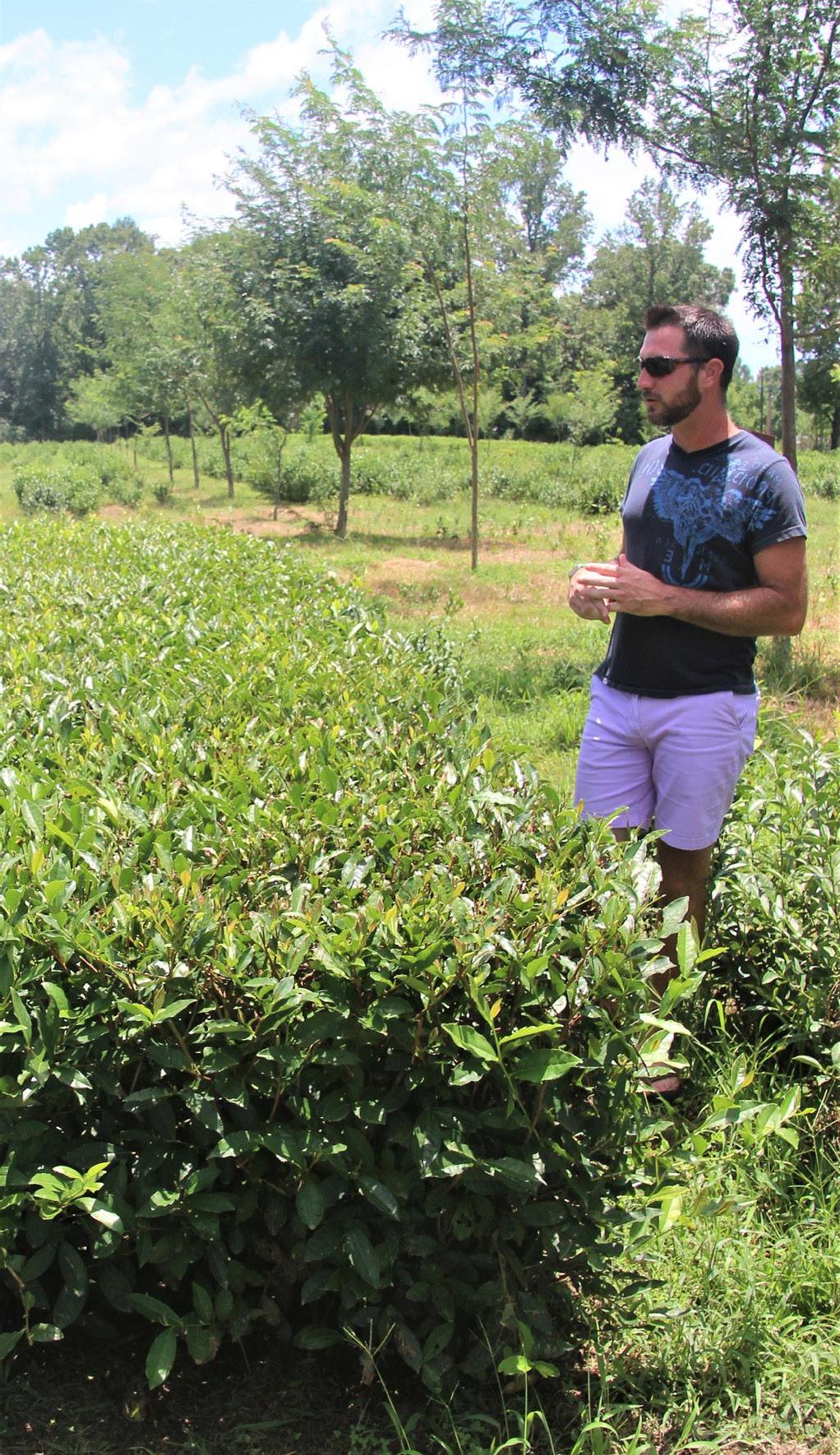The Great Mississippi Tea Company BY JULIAN BRUNT
I
n 2012 when Jason McDonald and Timothy Gipson started the Great Mississippi Tea Company, the outcome was far from certain, but they were confident they could pull it off. The timber farm they owned was destroyed in Hurricane Katrina, and they needed to find another way of make a living, but they wanted something that was interesting and challenging, too. They visited the Charleston Tea Plantation in South Carolina while on vacation and learned that the tea plant is in the camellia family. Camellias grow great in Mississippi, so maybe this was the idea they needed. As with any new project, the learning curve was steep. They had visited the Charleston Tea Plantation again, gathered as much information as they could, and the project seemed straight forward enough. The task at hand was to clear 10 acres of the property they already had, buy tea plants, water, weed and start. That’s not so hard, right? Starting a tea farm proved to be difficult, really difficult. The mortality rate of their first plants was extremely high, only 7,000 of the 30,000 they eventually ordered survived. It takes years for tea plants to mature to the point where their leaves can be harvested, so making a profit in the first years of business is near impossible. Obviously, this is not a simple business to get into, and the Great Mississippi Tea Company faced many a dauting task. Jason and Timothy are very bright fellows, have worked profoundly hard and are highly respected in the American tea community. Today, the Great Mississippi Tea Company is considered by many to be the most successful tea operation in the continental USA. Even southern Mississippi’s tea expert, Mimsie Ladner, owner of the tea company “Gachi”, agrees. “Although it’s relatively new, American-grown tea is a growing industry. In recent years, there has been a number of new growers entering the scene, with varying degrees of success. Many of them are flying by the seat of their pants, with little knowledge of the meticulous skills it takes to make a really good cup of tea.” Mimsie explains. “Jason and Timmy set themselves apart with their dedication refining the art of tea making to produce a quality product that competes with the specialty tea regions that have been growing tea for centuries. And their commitment and passion has not gone unrecognized; in the tea community, they are among the most respected American growers, while their tea is considered some of the best in the country.” Their first task was to find the tea plants that would do well in Mississippi’s hot and humid climate. The tea plants that do well in the mountains of China would not do well here at all. There are only two main varieties of the tea plant,
26 • October/November 2020
Camellia sinensis. One is Chinese and one is Indian. All tea plants prefer a rich and moist soil, with full to part sun, but with in the two varieties, there are types, or genetic variations, that prefer different conditions. They caught a break when they discovered that at one time the Lipton Tea Company operated experimental tea stations all over the country, and that one had been in Poplarville, Mississippi. They visited the site and brought home two plants. Eventually they found a source, and were able to order the plants they wanted, but the first two years were a total loss and the next was not much better. There
Tim talks tea.


